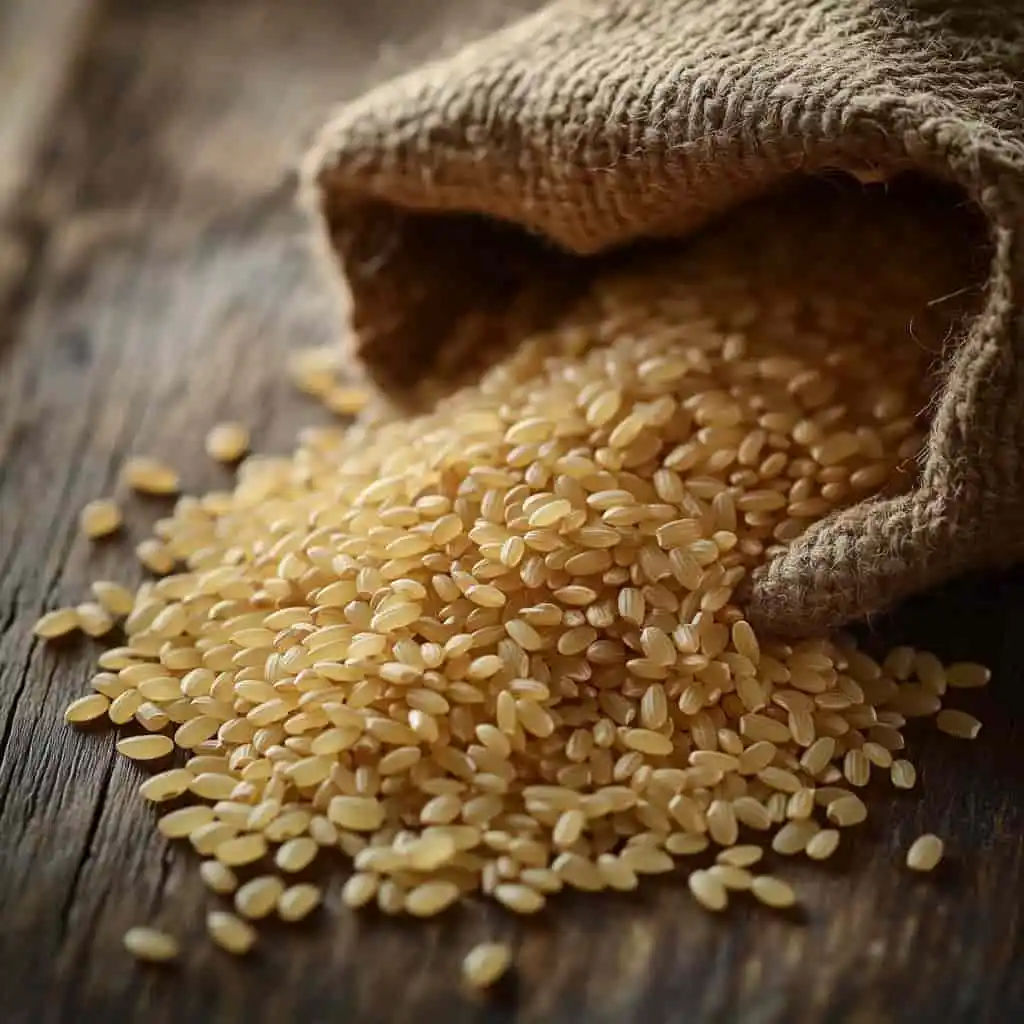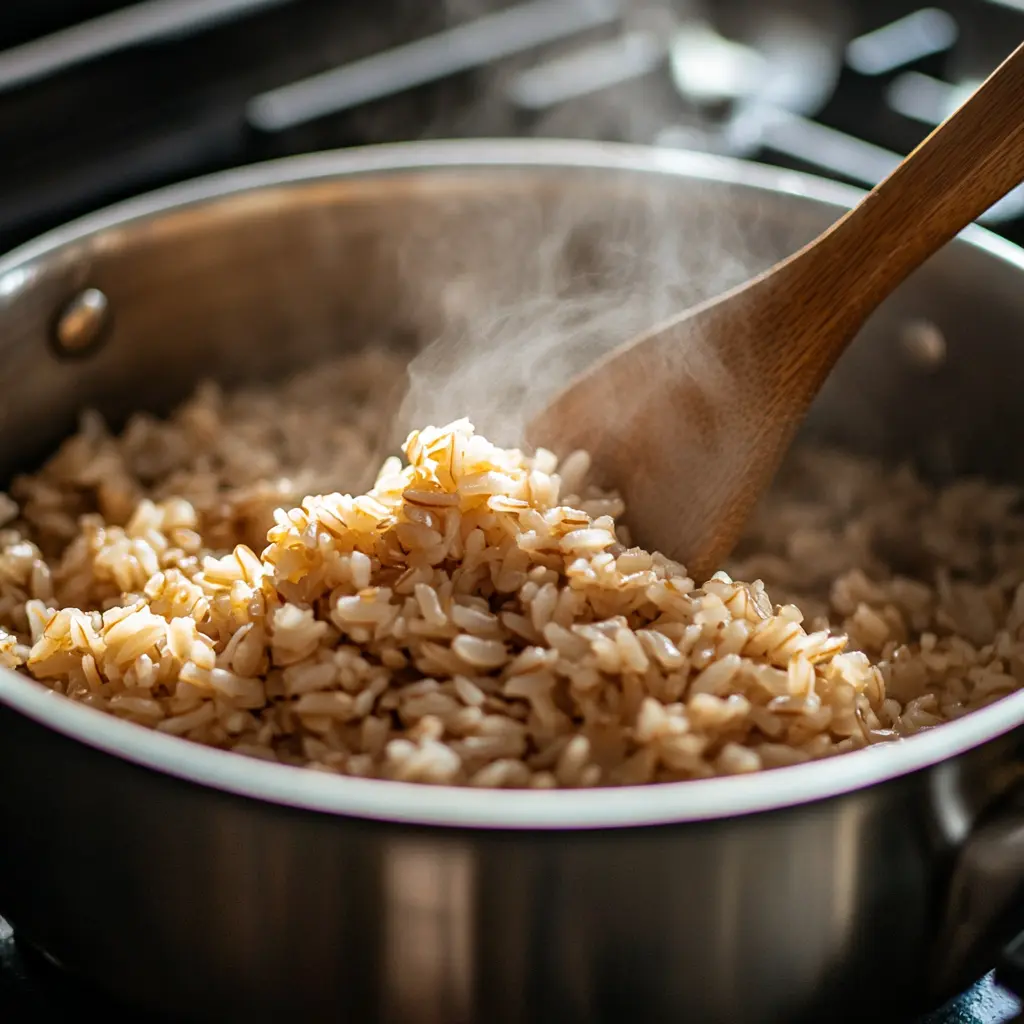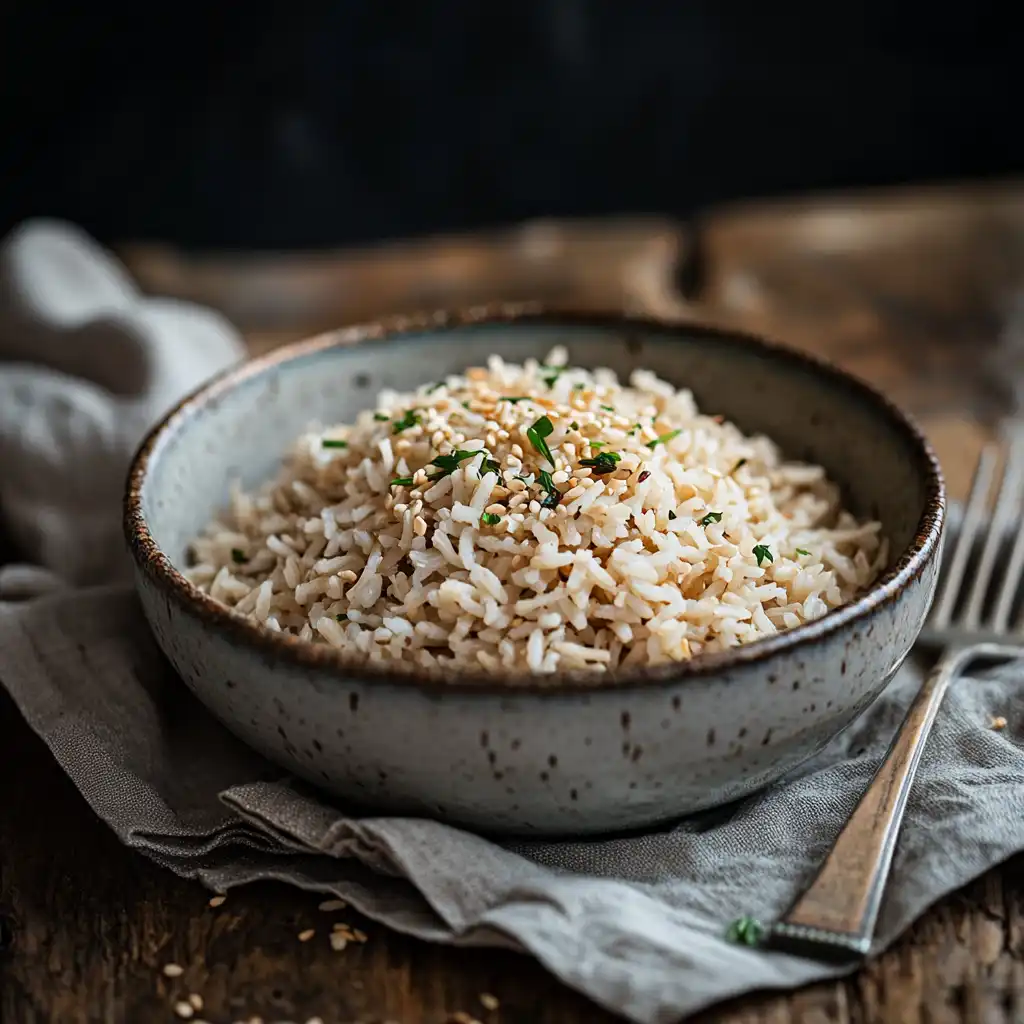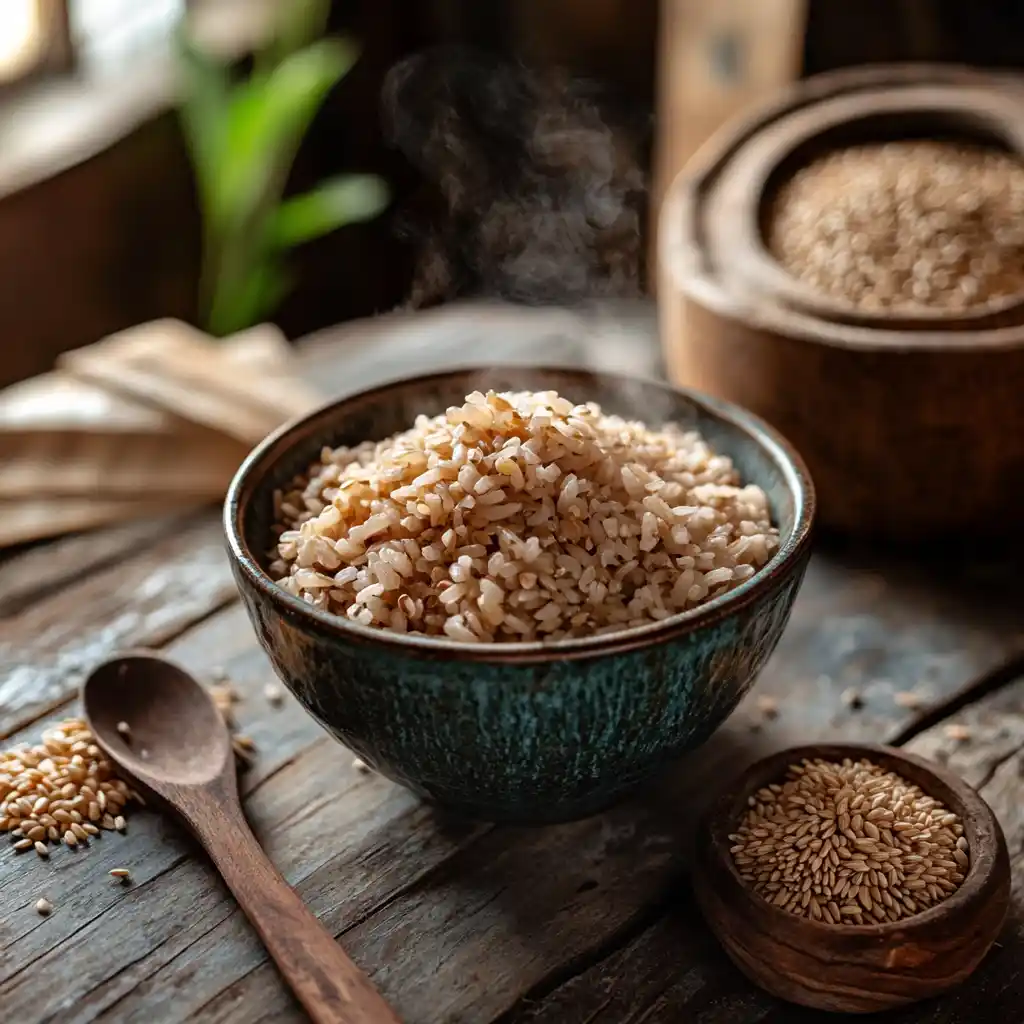Brown rice has become more than a health food aisle staple it’s a kitchen essential for flavor, fiber, and tradition. But many people still wonder: what’s the brown on brown rice, and is it really better for you? In this guide, we’ll dive into the unique taste, texture, and nutrition behind brown rice, explore why some cultures still favor white rice, and help you appreciate every chewy, nutty bite. Whether you’re meal prepping or just curious, there’s a lot to uncover in this ancient grain’s outer layer.
What Makes Brown Rice Brown? A Personal and Practical Take
The Brown Layer Explained
Back when I was a kid in rural Virginia, my mom kept white rice in the pantry and brown rice on the back shelf something she said “took too long to cook.” I didn’t touch brown rice until my late twenties, and when I did, it threw me. It was chewy. Nutty. Earthy. But that texture? That taste? That’s all thanks to the outer layer the bran.
Brown rice is essentially whole grain rice. Unlike white rice, the bran and germ remain, giving it a natural brown color and more fiber. This outer coating holds most of the grain’s nutrients: B vitamins, antioxidants, magnesium, and even healthy oils. That color isn’t dirt it’s where the nutrition lives.
The bran gives brown rice its signature tan-to-brown hue and toothsome bite. It’s also the reason it takes longer to cook and has a slightly nutty aroma when steamed. Think of it like a peanut with the shell on it’s heartier, more complex, and more filling.

The Taste and Texture Difference
That slightly grassy flavor and firm texture? That’s all bran. Compared to soft, fluffy white rice, brown rice delivers more chew, more substance, and more staying power in your meals. It absorbs sauces without turning to mush, making it ideal for bowls, stir-fries, and grain salads.
Some top brown rice picks, like Sukoyaka Genmai and Lundberg Short Grain, are known for balancing chewiness with softness. They’re especially good if you’re transitioning from white rice. Others like Dynasty Brown Jasmine or Seeds of Change’s microwave-ready options offer convenience with a clean, earthy profile.
Craving inspiration? You might enjoy this brown rice stir fry idea over on ModRecipes Asian Collection, where rice is treated like the star.
Next up, we’ll tackle the question everyone asks is brown rice actually healthier, or just trendier?
Print
Brown Rice Brown
- Total Time: 50 mn
- Yield: 2 cups 1x
- Diet: Vegan
Description
A simple, fluffy brown rice recipe with nutty flavor and perfect texture every time.
Ingredients
1 cup brown rice
2 cups water
1/2 tsp salt (optional)
Instructions
Rinse brown rice thoroughly in a fine mesh strainer.
Bring 2 cups water to a boil in a medium saucepan.
Add rice and salt, reduce heat to low, and cover with a lid.
Simmer for 45 minutes until all water is absorbed.
Remove from heat and let it rest covered for 10 minutes.
Fluff with a fork and serve.
Notes
You can soak the rice for 30 minutes beforehand for extra tenderness.
Use broth instead of water for added flavor.
- Prep Time: 5 mn
- Cook Time: 45 mn
- Category: Side Dish
- Method: Simmered
- Cuisine: Global
Nutrition
- Serving Size: 1 cup
- Calories: 216
- Sugar: 0g
- Sodium: 0mg
- Fat: 1.8g
- Saturated Fat: 0.3g
- Unsaturated Fat: 1.5g
- Trans Fat: 0g
- Carbohydrates: 45g
- Fiber: 3.5g
- Protein: 5g
- Cholesterol: 0mg
Is Brown Rice Actually Healthier? The Truth Behind the Hype
Brown Rice vs. White Rice: A Nutrition Showdown
You’ve heard it before brown rice is the “healthier” choice. But is it really? Short answer: yes, but let’s break it down.
Brown rice keeps its outer bran and germ layers, while white rice is milled and polished, stripping away most of its fiber, iron, B vitamins, and essential oils. This means brown rice packs more nutrition per bite, especially if you’re looking for:
- Fiber for digestion and fullness
- Magnesium for muscle and nerve health
- Selenium and manganese for antioxidant support
- Lower glycemic impact to help regulate blood sugar
A one-cup serving of cooked brown rice has about 3.5 grams of fiber versus less than 1 gram in white rice. That’s a significant difference, especially if you’re managing weight, blood sugar, or heart health.
In short, Brown rice is a whole grain, a whole grain are repeatedly linked to lower risks of chronic diseases. Plus, the higher fiber content means you stay full longer a huge win for meal planning and portion control.

But… Is It Always the Best Choice?
Healthier doesn’t mean “one size fits all.” Brown rice contains a lot of phytic acid, slightly reduce The absorption of some minerals such as iron and zinc. It also has more natural oils, meaning it can go rancid faster if not stored properly.
Still, for most people, the benefits outweigh any minor drawbacks. And when it comes to taste, variety matters. Brown basmati rice, for example, is a great bridge grain it’s light and fluffy like white rice but still packs a nutritional punch.
For those wanting to maximize brown rice’s benefits, try pairing it with something rich in vitamin Clike a bell pepper stir fry from ModRecipes Veggie Dishes to boost iron absorption naturally.
Ready to learn how brown rice got its name in the first place? Let’s dig into the history next.
Why Is Brown Rice Called Brown Rice? The History and Grain Truth
The Name Comes from Nature, Not Processing
When I first started cooking with brown rice regularly, a friend asked me, “Wait, is it dyed or something?” I laughed but it’s a fair question. The term “brown rice” simply refers to rice that still has its natural bran layer intact. No dyes, no tricks just less refining.
Once rice is harvested, it’s covered in a tough outer husk that’s inedible. All rice white, brown, red, black starts this way. Brown rice is what you get after removing just that husk. The bran and germ layers are left on, which is where its tan-to-brown color comes from. This natural color is why it’s called “brown rice.”
On the other hand, white rice is milled further to remove those nutritious layers, resulting in a polished, snowy-white grain that cooks faster and lasts longer on the shelf.
Historically, brown rice wasn’t a luxury food it was seen as peasant food. It was tougher to chew, slower to cook, and more prone to spoilage. But times have changed, and now, the same fiber-rich qualities that made it less appealing in the past are what make it sought after today.
Brown Rice Across Cultures
Brown rice wasn’t always globally embraced. In fact, in places like China, Japan, and India, white rice became a status symbol. Polished white rice looked cleaner, felt softer, and became standard in everything from home meals to temple offerings.
However, traditional diets often mixed white rice with vegetables, legumes, or fermented foods to make up for lost nutrients. And now? There’s a growing return to whole grains like brown rice, especially in urban wellness circles.
Explore cultural flavor pairings, like brown jasmine rice with Thai spices over on ModRecipes World Flavors, where brown rice meets global influence.
Up next, let’s tackle the classic question: why don’t the Chinese traditionally eat brown rice?
Why Don’t the Chinese Traditionally Eat Brown Rice?
Cultural Habits and Taste Preferences
When people ask why Chinese cuisine relies so heavily on white rice, the answer lies in both cultural tradition and culinary function.
For centuries, white rice symbolized refinement and prosperity in Chinese culture. Milling rice to remove the bran layer took more time, effort, and technology so serving polished white rice was a mark of status. Brown rice, by contrast, was often reserved for the poor or for animals.
But taste mattered, too. White rice is soft, neutral, and sticky, making it ideal for chopsticks and better at absorbing the flavors of bold sauces, broths, and stir-fries. Brown rice’s firmer, nuttier profile can compete with delicate ingredients, which is less ideal in traditional Chinese dishes where balance is everything.

Modern Shifts Toward Health
Today, the narrative is shifting. As people in China and abroad grow more health-conscious, brown rice is gaining popularity in urban areas and wellness communities. It’s showing up in healthy lunch boxes, macrobiotic meals, and fusion takes on Chinese classics.
Still, white rice dominates daily meals, especially in southern China where soft, fragrant grains like jasmine or sticky rice are beloved. The key is that many traditional dishes are structured around white rice’s characteristics meaning brown rice just doesn’t play the same role.
If you’re experimenting at home, try brown rice in more robust Chinese-inspired dishes like garlic-ginger tofu bowls or spicy sesame stir-fries. These pair well with brown rice’s grainy strength. You’ll find some flavorful inspiration in ModRecipes Rice Bowls, where bold meets wholesome.
So while tradition leans white, modern palates and health trends are making room for brown even in the heart of rice culture.
FAQs About Brown Rice
The “brown” on brown rice is the bran layer a fibrous outer shell that’s removed in white rice. It gives brown rice its chewy texture, nutty flavor, and nutritional edge. This layer contains fiber, vitamins, and essential minerals.
Yes. Brown rice retains its bran and germ, offering more fiber, B vitamins, and antioxidants than white rice. It’s linked to better blood sugar control, improved digestion, and longer-lasting fullness, making it a better choice for many.
Brown rice gets its name from its natural color, which comes from the bran layer. Unlike white rice, it’s minimally processed only the outer husk is removed. That’s what keeps it brown, hearty, and nutrient-dense.
Traditionally, white rice was a status symbol in China cleaner, softer, and better suited for chopsticks and subtle flavors. Brown rice was once viewed as peasant food. Today, however, health-conscious Chinese communities are reintroducing brown rice into modern meals.
Conclusion
Brown rice might seem like a modern health trend, but it’s rooted in something ancient and natural. From its rich nutritional profile to its chewy, nutty flavor, brown rice is a whole grain worth embracing whether in grain bowls, stir-fries, or simple sides. While cultures like China have long favored the polished comfort of white rice, the tide is turning. More of us are reaching for brown not just for our health, but for its depth, texture, and honest flavor. So grab a bag, get it simmering, and let this humble grain surprise you.

